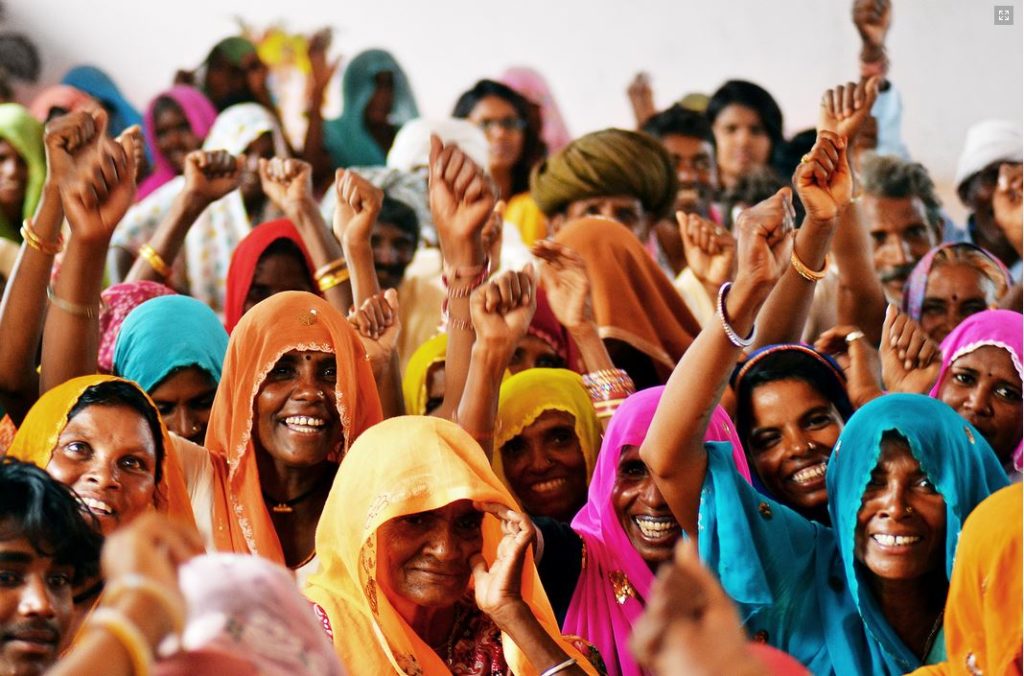
Elections and Bahujan Samaj
If we study the elections in different states in India, they display certain patterns and they can be grouped into broader categories in terms of social movement. This seems to begin to change when the BJP/Congress is trying to consolidate Indian political system into one party dominated the political system. But as is true in every case, Modi-Shah duo has limitations created by the India’s fractured social system.
The Hindutva brigade can override the fissures in the Indian society for some time, but they cannot do it perpetually as the caste is going to play its role unless it is annihilated in the greater national interest.
Delhi and Chandigarh are dominantly upper caste political space. It is also due to the population of the upper castes in these two states/UTs. Delhi is mixed population state and it has been mostly ruled by the upper castes. Sheila Dixit was a Brahmin and the current Chief Minister is Bania, Arvind Kejriwal.
Delhi has also a significant population of the Dalits, and because of its proximity to the state of UP, the Dalits have a certain level of awakening in Delhi. This awakening also shows the areas of migration of the Dalits from different parts of adjoining states to Delhi.
In New Delhi, there are over 200 Buddhist temples. Like their counterparts in the city of Mumbai, they are often small, but important community centres for Dalits to assemble.
A significant stride can be made in Delhi in terms of Dalit and Bahujan politics as it also represents a nation in its microscopic form in terms of diversity that it has. The BSP has its history in New Delhi, though it did not win a significant number of votes in New Delhi as yet, it has a huge potential to do so. Without much organisational efforts, the BSP won two seats in the recently concluded MCD elections. The seats can go higher. In reality, the greater consolidation of the Dalits and Bahujan from different castes, particularly Jatav/Chamar, Bhangis, and Dhobis can establish a strong alliance on the social and political level.
Delhi has a significant number of people from so-called Bhangi community. They have been designated as the Valmikis by the Hindu Nationalists and this hinduisation and the change in the nomenclature from Bhangi to Valmiki took place in Delhi itself. The larger sanskritisation of the Bhangis, particularly in Delhi, is paying rich political tribute to the BJP. The AAP benefitted from the support of this population and it rode to power in the Delhi assembly elections on that basis. I reckon that the symbol of the broom is not just an election symbol, but a ploy to attract a particular electorate.
Delhi’s Dalit movement can be strengthened. Though Delhi and Chandigarh fall in the category of “Upper Caste dominated political states”, the social movement in these two states can be made stronger.
The Hindi Belt (UP, Bihar, Rajasthan, MP), except Bihar, is now completely getting dominated by the BJP. Potentially, the rising backward class differentiation will not lead to the political consolidation of Bahujan minded parties. But judging by the Bihar experiment, it is still possible to have a strong Bahujan political force in the rest of the states. It depends upon the cultural and social consolidation of the Chamars, the numerically dominant caste in the Hindi belt.
In West Bengal, the BJP is out to unsettle the ruling TMC which unsettled the Communist regime of 3 decades. The West Bengal was ruled by the support of the dominant Scheduled Castes who organised themselves as the Matua movement but have failed to take an independent political stand. If the Dalits in Bengal take an independent stand, their number will enable them to carve their own political destiny on their own strength.
At a point of time in the history, the Bengal Scheduled Caste Federation was a strong political force. The rising Scheduled Caste movement in Bengal was countered by the Congress under the leadership of S.C. Bose.
Odisha is also seeing the larger consolidation in favour of the BJP. The state of Odisha is potentially upcoming fort of Dalit movement, but due to lack of political organisation, it is difficult to capture that rising assertion of the Dalits into political power.
The southern states are mostly dominated by the dominant caste politics. They are mostly landholding castes and their regimes have been caste-biased regimes. For example, the congress in the state of Karnataka is contemplating on bringing Vokkalinga leadership at the top to counter the similar wooing of the Vokkalingas by the BJP. Lingayats and Vokkalinga have been dominant intermediate castes in Karnataka. However, the Dalits in Karnataka have been assertive and torchbearers of the movement of Babasaheb Ambedkar.
No election is a setback for the Bahujan because the identity is not yet formed the way its originators wanted it to be. They provide opportunities to continue to learn and become strong by imbibing those learning in the future.



Good analysis of political conditions prevailing at the time of hindutva.many a times spactators from outside blames ambedkarites or agitating SC, ST, OBC for their inactivity in elections or social change agitations but fails to recognise a radicalisation of caste hindus or popularly known as sanskritisation of caste hindus those who not interested in social change for equality and happy with their upgraded status in heirarchy. These sanskritised peoples are responsible for ever increasing graph of BJP who blames their failure on minority appeasement and reservation policies, also neoliberal aspiration framing their discriminatory mindset..still there exists a hope to rise above the level but needs to work out more and extensive out reach programe to teach people and train forthcoming leaders of disadvantageous society.